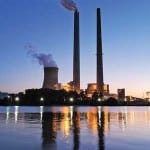Janet McCabe, a top air regulation official at the Environmental Protection Agency (EPA) defended the agency’s carbon rule for new power plants at a House hearing on Wednesday, even as industry witnesses countered that technology does not yet exist to meet the regulatory requirements.
The EPA’s acting assistant administrator for air and radiation reiterated the Obama administration’s commitment to mitigate “current and future damage” caused by greenhouse gas emissions.
The proposal meets the Clean Air Act’s requirement for “adequately demonstrated technology,” and “there is adequate and robust data showing that the various components that we based that standard on are in use and will be ready,” she told lawmakers at a joint energy and environment subcommittee hearing of the House Science Committee.
The EPA has previously said it considered the expected performance of the carbon capture and storage (CCS) technology at a number of facilities, including the Kemper Country Integrated Gasification Combined Cycle project, the Texas Clean Energy Project (TCEP), and Hydrogen Energy California (HECA) facilities in finding that CCS is “adequately demonstrated.” Rules under the Clean Air Act have had a history of accelerating newer technologies, McCabe said on Wednesday.
The hearing on Wednesday was held to assess whether “facts about carbon capture and storage” support the EPA’s New Source Performance Standards proposed under the Clean Air Act’s Section 111(b), as Environment Subcommittee Chair David Schweikert (R-Ariz.) said. But he added: “These rules are simply a thinly veiled attempt to prevent new coal power and eventually take down natural gas.”
Robert Hilton, who is vice president of power technologies for government affairs for carbon capture technology pioneer Alstom, noted that no carbon capture technologies had yet been deployed at commercial stage, though several Alstom technologies had progressed through the validation scale demonstration. “This stage is the proof of technology in real field conditions—or in this case actual power plant flue gas,” he said. “It is at this point we can say confidently that the basic technology works.”
But, he cautioned, “The final stage to reach commercial status is to perform a demonstration at full commercial scale. There are several reasons for this requirement. It is critical to be at commercial scale to define the risk of offering the technology. This cannot be defined until the technology can be shown to work at full scale.”
Significantly, after listing the EPA’s considered CCS projects, Hilton asserted that “four of the six projects are gasifiers and high pressure technology not suited to pulverized coal or natural gas combined cycle electricity producing plants, which are at atmospheric pressure.”
“Alstom suggests this summary demonstrates the EPA referenced projects fail to meet the ‘technically feasibly’ criteria. These technologies are not operating at significant scale at any site as of the rule publication,” he said. “We believe the failure to meet the Clean Air Act criteria should prompt EPA to reconsider crafting carbon control regulations more in line with the technology development and [Department of Energy] timeline.”
But then capture is only one half of the equation, and storage will be a bigger challenge, said Robert Trautz, a senior technical leader in the generation sector at nonprofit corporation EPRI. Trautz noted that the EPA rule calls for a mandatory reduction in carbon dioxide emissions intensity using CCS technologies that will require generators to reduce carbon emissions to less than 1,100 lb/MWh gross.
“To place this emission limit in perspective, the amount of CO2 that will need to be captured and stored to meet the 1,100 lb/MWh gross emission limit is approximately 40% of the CO2 output from a supercritical, pulverized coal-fired [electric generating unit (EGU)],” he explained. “A relatively modest size 1,000 MW EGU will produce approximately 7.8 million metric tons of CO2 per year, requiring that about 3.1 million metric tons of CO2 be captured and stored per annum. For this example, the total CO2 tonnage to be stored over a 40 year EGU life span will exceed 120 million metric tons.”
That will require a subsurface footprint that could extend over many square miles. “It also demonstrates the importance of characterizing and utilizing large regional reservoirs for storage due to the very large quantities of CO2 from multiple EGUs,” he said. “Further government investment in research is needed that will integrate fossil fuel-fired power projects with capture and saline storage at full scale to demonstrate that the technology is feasible and reliable,” he concluded.
Testifying for the American Public Power Association (APPA), General Manager of City Utilities of Springfield Scott Miller also said the EPA’s conclusion that CCS is adequately demonstrated is “premature.” None of the four pilot projects described by the EPA exhausts or sequesters carbon dioxide he said.
“Of the four, two are in the process of being constructed and two are in development. Of the two being constructed, the Kemper plant faces development costs in excess of $1 billion, and is dependent on a technology development for a lignite coal that is not available any other place in the country. The second plant under construction, in Canada, is a post combustion CCS operation at a small research facility boiler that is not scalable. Of the two projects [TCEP and HECA] still in development, there is no firm timeline for construction of either.”
[Ed: This article was updated 3/14/14 to correct a quote that could have been misconstrued as being attributed to the wrong party.]
—Sonal Patel, associate editor (@POWERmagazine, @sonalcpatel)










